Thailand and Malaysia
- Federica Bordoni
- Jan 21, 2024
- 20 min read
Updated: Dec 17, 2024
A journey through Thailand starting in Bangkok, to the northern temples of Chiang Mai and Chiang Rai, before heading south to enjoy the beaches of Phuket, Phi Phi Island, and Koh Lipe. Last stop in Malaysia in Kuala Lumpur before returning.
☛ ITINERARIO IN MAPPA SUGGERIMENTI BANGKOK AYUTTAYA CHANG MAI CHIANG RAI PHUKET KOH PHI PHI KOH LIPE KUALA LUMPUR

Bangkok: la città
Bangkok, the capital of Thailand, literally surprised us. We expected a confusing metropolis with air pollution, traffic, swarms of mopeds, and rubbish, instead, it is well-organized, clean, well-kept, and with little smog. We liked it a lot and recommend having at least four full days to visit the city and the surrounding area (Ayuttaya and markets), if possible even five.
Main temples :
Get off at the Samam Chain metro station and visit them on foot:
Pak Khlong Talat Flower Market, where beautiful handmade arrangements are made and can be bought to take to the temple.
Wat Pho: the largest and oldest temple in the city, home to the famous Reclining Buddha (15 meters high and 46 meters long) and 108 jars where you can leave a coin in each one as a karmic path and good omen. Also inside the complex are beautiful Chedi or stupas, the Thai School of Traditional Medicine and Massage which was the first to be officially recognized and, as in all Thai Buddhist temples, the school for children from primary school to university for monks.
Royal Palace and the Wat Phra Kaew or Temple of the Emerald Buddha. This is Thailand's most important religious complex. The Buddha was discovered in 1434 in Chiang Rai and is the kingdom's most revered sacred image; the ruler himself performs the ceremony of changing the Buddha's robes three times a year for the change of seasons. It is possible to be blessed with a lotus flower and scented holy water. The colors of the complex, statues and frescoes are incredible and dazzle in the sun. You cannot enter the Royal Palace, but the Queen's Textile Museum is worth a visit. Important for visiting: long trousers and skirts with shoulders covered otherwise you won't get in (there are shops outside where you can buy clothes for 100bath); last entry is at 3.30 pm and the complex closes at 4 pm.
In the narrow streets near the Royal Palace is the Amulet Market, a bit decadent where you can find Buddha figures and stone bracelets.
Wat Arun can be reached by a small boat from the small harbor in front of the Royal Palace. The main column is called Prang and is 86m high and covered with a mosaic of white Chinese porcelain. It is the temple of Aruna, the god of the rising sun in Hinduism, but it is beautiful to admire it at sunset.
From the Royal Palace, you can continue to Thammasat University where there is a nice walk along the river and you can stop for something to eat. From here, you can continue to Khaosan Road, the famous backpackers' street with European-style eateries and fried insect stalls.
Chinatown and other temples:
Getting off at the Hua Lamphong metro stop you can visit on foot:
Wat Traimit, the temple with the world's largest solid gold Buddha (5 meters high and weighing about 5,500 kg)
A stone's throw away begins Chinatown with its red gateway and the Kuan Yim temple, atmospheric at night with its candles lit to ward off disease (it is no coincidence that it is adjacent to the hospital). From here it is only a few minutes to the market and street food area where you can try many specialties from 4 pm onwards.
Continuing on foot or at the Sam Yot metro stop you can visit:
Wat Suthat with the large 22-metre teak swing in front (the original was built in 1784 to celebrate an abundant rice harvest).
Wat Saket or Temple of the Golden Mountain: once located outside the city walls and a public crematorium. You have to climb 344 steps to reach the top and it is the highest point in the capital. It is called Golden Mountain because of the chedi covered with gold leaf that is lit up in the evening and glows at night.
Wat Ratchanatdaram with the unique structure of Loha Prasat or also called 'Steel Castle'.
Canals on the river:
An unexpected area of Bangkok that we liked is the Khlong Bang Luang Floating Market. It is not a real floating market but a creative community living on the river, with small houses, small restaurants, and shops where you can stop and create your own bracelets and paint pictures. It is a very relaxing and atmospheric environment. Here at the weekend, you can also see traditional puppet shows or you can take a boat and take a tour of the various attractions along the river such as Wat Arun and Wat Pakman. We preferred to walk to Wat Pakman (about 15 minutes), it is a recent temple with an impressive 69-meter Buddha statue and a stupa behind it that hides a wonderful ceiling painted in greens and blues that radiate with light and leave a sense of mysticism.
Shopping and Markets
Among the most popular shopping centers are:
MBK Center: where you can find brand shops, great bargains and counterfeit goods, there is also a very convenient currency exchange. Nearby is the House Museum of Jim Thompson, the silk king, in Thai style built in wood.
The Platinum Fashion Mall has 7 floors and over 2000 shops with the best prices in town.
Instead, the largest market in the city (and perhaps the world) is the Chatuchak Weekend Market, open only on Saturdays and Sundays from 9 am to 6 pm.
Another touristy but worth-visiting market is the Maeklong Train Market. It's not easy to get there on your own by transport because it's very far (1h30 from Bangkok without considering the possible traffic); many recommend the already organized excursions that combine the train market and the Damnoen Saduak floating market. We prefer a private taxi for a day booked from our hotel at a total cost of 40€. The train arrives at 8.30 am, 11 am, and 2.30 pm, and all the stalls retreat as it passes, then it leaves again not half an hour later, and again all the activities close and open as it passes.
Instead the Damnoen Saduak floating market is a playground for tourists, they say it is better than the weekend ones in Amphawa or Tha Kha..we preferred the one above in Khlong Bang Luang.
Famous streets
We have already mentioned the famous Khaosan road, while near Silom and Lumphini Park is Patpong. This is the street of the red lights district with a few nightclubs, illegal ping pong pussy deals (don't go, some are scams, just read the reviews!), massages, a few clubs and the LGBT street.
👟Suggested itinerary: Day 1: Wat Pho, Royal Palace, Wat Arun, Khaosan road / Day 2: Wat Suthat, Golden Mountain, Wat Traimit, Chinatown / Day 3: Ayuttaya / Day 4: Market train, floating and shopping.
🏨 Hotel Bandara Suite Silom ten minutes' walk from Silom metro and Lumphini park, perfect flats for work or family, excellent cleanliness, swimming pool, bar, restaurant and friendly, helpful staff.
🍴Chinatown (also home to Jay Fai, the only one with a Michelin star for its street food). Near Silom, you can eat Japanese on Thaniya Road (before 11 pm, afterward it becomes a life of the red district) or we suggest Fengfu Mala Hotpot: an all you can eat of meat, fish, and vegetables to boil and season to taste.
Ayutthaya
Ayutthaya can be reached by organized excursion, private car, or train: we were curious and tried this option (cheap but very spartan). When we arrived at the station, we took a tuk-tuk that took us to the first temple; it is also possible to rent a tuk-tuk to go all the way around the temples. It is good to dedicate a day to seeing the temples at leisure, also because it is very hot on sunny days.
The Ayutthaya Historical Park is a UNESCO site and chronicles one of the richest empires in Southeast Asia. The Kingdom of Ayutthaya (1350-1767) was an important connection point between West and East, frequented by Chinese, Arab, Persian, Malay, Japanese, and Portuguese merchants. with more than 300 temples and a very large population. However, during the 18th century, Ayutthaya gradually lost power and the Burmese in 1767 managed to conquer the city and devastate it in a matter of days.
Main temples to visit and in order on the park route:
Wat Phra Mahathat: 'mahathat' means 'relic' and was built specifically to house the sacred remains of the Buddha. Here lies the Buddha's head among the roots of a bodhi tree.
Wat Ratburana: well preserved where you can enter the crypt and admire some wall paintings.
Wat Thammikarat: the temple of a thousand cocks and the stupa surrounded by lions.
Wat Phra Si Sanphet: the most beautiful and impressive with three large chedi built to preserve the ashes of the three kings. Here you will also find the ancient Royal Palace and the Wihan Phra Mongkhon Bophit with the Buddha statue and period photos of how they found the statue and temple embedded in the jungle.
Wat Phra Ram with tall chedi and a canal full of water lilies in front of it; we also found many little bars where we could eat excellent pad thai.
The park between the temples is not well cared for but a short walk will give you a chance to see the varanus that live here undisturbed.
The temples close at 5 p.m. with sunset and afterward can be admired illuminated by lights. Near the station, one can also visit the Ayutthaya floating market.
🚅 By train: metro to Bang Sue, exit from the main station and go opposite where there are two small platforms at Bang Sue Junction. Here buy tickets to Ayutthaya (58baths for two), the staff are friendly and helpful when the train arrives. The journey is about 1h20 on 1950s trains with hard wooden seats, open windows, and fans. For the return, there are trains about every 40 minutes and the last one is at 9.40 pm.
Chiang Mai
Chiang Mai is located in northern Thailand, on the banks of the Ping River and surrounded by mountains. It is a quiet city that enchants with its beautiful temples, variety of handicrafts and local cuisine. The climate is warm and a sweatshirt is needed in the evenings. It was founded in 1296 as the capital of the ancient Lanna Kingdom and still exudes history with its walls and monuments.
Wat Chedi Luang is the temple we liked best for the calmness it instills. The chedi was built in 1401 and was about 90 meters high, but was destroyed by an earthquake and is now 80 meters high (still the tallest in the old city) and has a decadent charm. It was once the home of the Emerald Buddha, which is now at the Grand Royal Palace in Bangkok. Here you will also find the Lak Muang Shrine, where you can talk to young monks who are happy to explain their lives and listen to ceremonies.
Wat Phra Singh is among the city's most important and most scenic for its Lanna-style roofs and pagodas. Also called the Temple of the Lion Lord, it was founded in 1345 to house the ashes of King Kham.
Wat Lok Moli is unique for its three-tiered wooden roof, its picturesque chedi and the lanterns that surround it. It is believed to be one of the oldest temples in the city and houses the ashes of some important figures of the Mandrai dynasty. It is possible to pull the rope to get a small dragon to the chedi to ask for a blessing. In the street opposite you can visit Wat Rajamontean.
Wat Sri Suphan or Silver Temple is distinguished from the others by its shiny layer of silver paint that shines in the sunlight. The tips of the stupas are made of solid silver and many carvings depict Buddhist legends and world cities. Entry into the main temple is for men only. It is believed that the te
Wat Chiang Man, the ancient residence of the city's founder King Mengrai.
Wat Phan Tao with its small golden chedi and continuing to walk around the city you will find temples to explore at every turn.
Wat Phrathat Doi Suthep is the most visited, famous, and revered temple in Chiang Mai and therefore packed with tourists. You have to climb 309 steps to reach the 600-year-old golden chedi; here you can walk around three times for good luck and wave your chopsticks to get your prophecy from the Buddha. There is a beautiful viewing terrace from which to see the city and the surrounding mountains. To get there, you can rent a scooter (about 250 baths per day) or use the red tuk tuks that leave from Wat Phra Singh.
Just below Wat Doi Suthep is the temple that fascinated us the most and the only one that has retained that mysticism and authenticity: Wat Pha Lat. This temple is well cared for, with few tourists and surrounded by nature; to reach it you can also take the Monks trail (45 minutes of trekking in the middle of the jungle from the Chiang Mai zoo). The story goes that King Kuena decided to transport the Buddhist relics to the top of Mount Doi Suthep on his white elephant, but it collapsed and died; the king ordered a temple to be built at the place where his precious elephant had died and at every spot where it stopped to rest. One of those resting places was the site of Wat Pha Lat and over time it became a popular resting place during the pilgrimage
In addition to the temples, Chiang Mai is famous for its magnificent street food and handicraft markets. These are the perfect places to shop and buy nice souvenirs at great prices. Every evening you can go eat and shopping at the Chiang Mai Night Bazaar or at the street food near Chiang Mai Gate.
Unbelievable is the Saturday and Sunday night markets (from about 10 pm to 11 pm): the Saturday Night Market starts from Chiang Mai Gate and arrives at the Silver Temple; while the Sunday Night Market is huge taking in almost the entire old town (roughly from Tha Phae Gate towards Wat Chedi) and offering the lowest prices, even massages at 100bath.
A place we liked is Khlong Mae Kha, a riverside promenade in the evening lights with stalls and places to eat. Finally, if you still have time, you can visit the Bo Sang Umbrella Village, where they make handmade umbrellas out of colored paper. Also the Doi Inthanon National Park and Pai Village.
✈️ From Bangkok there are many cheap flights to Chiang Mai, or you can opt for the night train (good service but about 11 hours travel time).
🏨 Hotel Decharme good value for money, with a swimming pool, great location and a very friendly family on the doorstep who cook, rent mopeds and exchange money at the best rate in town.
🍴Old City Inn Restaurant family-run, friendly and the best Fried Rice Shrimps and Spring rolls in town.
💆♀️Chiang Mai Women Correctional Institution Vocational Training Center here massages are carried out by female prisoners and there is a small museum explaining how they ended up in prison for life. sometimes for sentences that in Europe would be considered derisory.
Bathing with elephants
The half or full-day elephant excursion is one of Chiang Mai's must-do's. Many agencies organize it directly on-site, while only a few can be booked online before departure. We looked for one of the most ethical sanctuaries possible: it's definitely touristy but the elephants were fine and didn't have to do anything. The Kanta Elephant Sanctuary takes in elephants that have previously worked hard for tourist entertainment or in the logging industry and fights to prevent them from being ridden, poached, overworked or mistreated.
Being able to be close to and touch these elephants gives a deep feeling of peace and well-being, as only animals can do.
We chose the half-day, which is also suitable for families. We were provided with a change of clothes, pick-up from the hotel, drinks and snacks. First, we learned how elephants live: for example, they don't sweat from their skin but from their eyes, they have rough skin, they are much smaller than African elephants, and when they lose their teeth they can no longer pulp their food and therefore their intestines are not able to assimilate it and they quickly die in the jungle. We then prepared three snacks for them and fed them (they have very soft tongues!). Finally, we bathed in the river with them while we washed their backs while their floating poops floated around our legs. Great experience!
🐘 Kanta Elephant Sanctuary: https://kantaelephantsanctuary.com/

Chiang Rai
Chiang Rai lies even further north, a 3-hour drive from Chiang Mai and on the border with Burma and Laos. This destination is famous for 3 very special temples, Singha Park, tea plantations, local villages such as the Karen women's village (long neck) and the Golden Triangle (a cruise on the Mekong river that we did not do).
The temples are not historical, but were created by contemporary artists and are not yet finished. Some say they represent heaven, the human state and hell.
White temple: the original temple was in a bad state and it was the famous local artist Chalermchai Kositpipat who redesigned and financed the project, opening it to visitors in 1997. The gleaming white and mirrored decorations leave one dazzled, but one must be careful of the various hidden symbols. The entrance bridge symbolizes the passage from hell to heaven, and among the hands reaching up to heaven there is one that gives the middle finger; inside the temple modern characters such as Doraimon, Saw the Riddler, and others are depicted that leave one a little perplexed. In the courtyard between the rocks and the waterfalls there are ninja turtles and in the trees marvel heroes...and these are just some of the ones to be found.
Blue Temple: inaugurated in 2016 by the students of the White Temple artist. This deep blue temple is dedicated to the river and tigers, which lived in the area a hundred years ago.
Black temple or Baan Dam Museum: this is the creepiest, but also the one we enjoyed the most. Surrounded by nature, you walk through a series of large and small demonic houses. Here, Thai artist Thawan Duchanee lived for 40 years and created his infernal works made of crocodile skins, tables and thrones made of buffalo horns, and paintings of demons on the run...all always striving for the Buddha's enlightenment.
The visit to the Karen women's village is perhaps the government's way of helping these people who have fled Burma to receive money. One enters an open space with many stalls where women weave scarves dressed in their traditional clothes and with collars that lower their shoulders. It is interesting to walk through some side streets to see the village and everyday life. Having more time, it would perhaps be more authentic to go into the villages in the mountains and see other local realities.
🚌 We opted for the organized day trip from Chiang Mai with Sabai Tour Chiang Mai: pick-up at 7.30 am; stop halfway at the volcanic hot springs where you can boil eggs or warm your feet; visits to temples for about 40-45 minutes each; Karen women; lunch, guide and tickets included. We were a small group of seven and paid 1300 baths each. We were worried about the hassle, instead, it was better than expected. Otherwise, in Chiang Rai, you can stay one night and then leave. (There is an airport to/from Bangkok and Phuket).
Phuket
For us Phuket was just a quick stop to visit a friend; in general, we found it very confusing and somewhat similar to Romagna.
Phuket Old Town with its historic colonial-style buildings all colorful.
Kata Beach: a beautiful bay with umbrellas and free beach and many restaurants behind it.
Beaches suggested by Italians living in Phuket in winter: Paradise Beach, Freedom beach, Kata Noi.
Patong Beach is most famous for fun.
Many day trips can be organized from Phuket, such as to Phi Phi Island, James Bond Island, and Similan Islands for snorkeling.
🏨 The Royal P Phuket in the old town with parking and easy access to Rassada harbor. To Kata Beach without traffic took 30 minutes, on the way back almost 1 hour.
🍴Red Chair for good quality food and price, The Italian Job for coffee and breakfast.
Koh Phi Phi and Maya Bay
From Phuket to Koh Phi Phi we took the slow and comfortable ferry and it took us almost 2 hours.
On arrival you have to pay 200 baths per person to help keep the island's marine park clean; arrival is very chaotic between luggage, boats and the narrow streets of the center swarming with tourists. Our hotel was on Long Beach, further away from the center (about 40 minutes walk or by barge), but it was a good choice for relaxing.
Phi Phi Island was destroyed by the tsunami and with the reconstruction the first roads for first aid and rescue vehicles were made and warning systems were put in place.
Ton Sai beach is used as a harbor, one has to travel to Koh Phi Phi Hospital to go to the beach and eat beachside. Loh Dalum beach is bigger but watch out for the tides because from the afternoon the sea starts to recede. The most beautiful is Long Beach with beautiful colors, relaxation, sunbeds at 100 batches per day, and little fish swimming between your legs. To see the famous strip of land between two seas you can climb up to ViewPoint.
With a private long tail boat, we went to Koh Phi Phi Lee to see Viking Cave which you pass a few minutes from outside, the famous lagoon which has really magnificent colors and shallow water, and Maya Beach famous for the film The Beach where you pay 400bath per person to preserve the marine park, you cannot swim (it was reopened in 2023 after years of closure to try to restore the ecosystem) and you get there by walking.
🏨 HIP Seaview Resort @ Phi Phi or Phi Phi The Beach Resort or all those on Long Beach that were beachfront; while towards the centre Mama Beach Residence or the beachfront bungalows of Phi Phi Nice Beach Resort.
🍴 Food market in the city centre as the skewers from Ma Ma da BBQ and Nay Hying Restaurant at Long Beach.
🚤 ChaoKoh Ferry to go to Phuket - Phi Phi we enjoyed the service, suitable for everyone, slightly slower journey but peaceful and calm.
🤿 Excursions from 3h (Maya beach), 4h (+Monkey beach), 6h (+plankton) or on the island's various beaches.
Koh Lipe
Koh Lipe is a small island near the Malaysian border and inside the Ko Tarutao Marine Park. On arrival, you pay the entrance fee (environmental tax) which lasts 5 days and costs 200 baths per person. It is a small island that is easy to get around on foot and perfect for relaxing on the beach and in the evening. The blue-green color of the water makes this island spectacular, especially during the morning when the colors are even brighter. Consider at least three full days because you will never want to go back to real life. On the island, you can snorkel and spot families of clownfish in the anemones and in the evening you can see the blue plankton glistening on the shore carried by the waves.
The best beach is from North Point Beach (a famous patch of white sand from which you can see the sunset) to the Symbolic Cafe, at this cafe there are free umbrellas and deckchairs, masks and kayaks to rent, good pad Thai and shade so you don't get burnt. A little further on is Sunset Beach and you have to watch out for the rising tide around lunchtime. While Sunrise Beach is noisier because of the many wooden boats passing by, Pattaya Beach serves as a marina and you can see a beautiful sunset.
The island is criss-crossed by Walking Street where the majority of shops, supermarkets, massage parlours, bars, and restaurants are located. This street leads in less than 30 minutes on foot from Pattaya to North Point, or you can use the taxi-bikes that whizz through the streets for 50 baths per person. In the evening it is a very lively area until around midnight.
There are several excursions (3 main programs) to snorkel the neighboring islands of the Marine Park from 600 baths per person or you can hire a private boat and take the tour you want. In front of Koh Lipe is Koh Adang Island where you can walk through the jungle and reach the viewpoint.
New Year's Eve on Koh Lipe is wonderful! Some resorts organize expensive dinners with entertainment; otherwise, you can eat at some beach clubs and then enjoy the fireworks display that starts at midnight and continues for 45 minutes between resorts and private individuals lighting rockets. Some bars stay open with music such as the Monkey and the Maya. And finish with a dip in the sea under the stars!
🏨 Adang Island Resort (well-kept and excellent staff, swimming pool breakfast and meals with sea view, beach, free kayaks and masks, shuttle to Koh Lipe but last at 20.30 to get back), Varin Beach Resort (in Pattaya, spartan, chaotic, ok newer bungalows), super luxury with private pool and beach bungalows Bulow Casa Grand View Resort & Spa, Zodiac Sun Resort and neighbors for beach bungalows.
🍴Papaya Mom extensive menu, excellent kebabs, and live music. Kioskino by two Italian Romagnoli.
🍹Monkey (open until late evening) and Zodiac to drink at sunset, fire performances, and listening to music.
🚤 Koh Lipe can be reached from Phuket/Krabi/Phi Phi With the speedboat making a stop at Koh Lanta, then you change boats and you can choose a slower boat (as we did with Tiger Line Ferry - total 4h30 trip from Phi Phi) or another speedboat but it is more risky if the sea is rough and often the captains drive like crazy. Or from Malaysia with the Satun company you arrive in 1h30 at Langkawi where there is an airport (very convenient and well organized); you don't need a visa but just fill out a form when you arrive.
🤿 For excursions ask Cristiano at Family Song Koh Lipe Tour & Travel in Pattaya.
From Thailand to Malaysia
Kuala Lumpur
Last stop Malaysia! Unfortunately, we didn't have time to visit the island of Langkawi, which is included in the UNESCO geoparks, but we headed straight to Kuala Lumpur.
The KL airport is a long way from the city center and it is advisable to book a Grab in time because the taxi service on the spot is more expensive (but efficient and allows you to pay immediately with your card without any surprises on the price). You pass the Sepang Circuit and arrive in downtown. Kuala Lumpur can be seen at leisure in 2 days, it is clean, modern and well-organised.
Symbols of the city are the Petronas Towers, 452 meters high, once the tallest building in the world, and still very fascinating especially at night when they are illuminated. Inside is a shopping centre and outside is a park with the spectacle of colorful fountains at the stroke of every hour from 6 pm. Another iconic tower is the KL Tower where you can climb and see the city skyline.
The historic center is Merdeka Square, a significant place in Malaysian history as here stands the huge flag hoisted for the nation's independence from the British in 1957. Nearby is Masjid Jamek, the city's oldest mosque in colonial style and at the confluence of the two rivers that give rise to the city's name (Kuala where two rivers converge and Lumpur meaning mud). Another significant modern mosque is the Masjid Negara.
A few minutes' walk away is China Town with its famous Petaling Street (designer bags, shoes and glasses) and the Hindu Sri Maha Mariamman Temple (from here the procession to the Batu Caves starts). The streets are decorated with beautiful murals and nearby Kasturi Walk and Central Makert Pasar Seni are more interesting than Petaling Street.
Stopping with the metro at KL Sentral, the shopping mall, the Chinese Thean Hou Temple, and the Little India Brickfields with many typical products and clothes at low prices are worth a visit.
Batu Caves are the city's main attraction, you can get there by train or by Grab for a few Euros. They became famous in the mid-19th century thanks to settlers and a sacred place in 1890 thanks to Pillai, also founder of the Sri Maha Mariamman, who installed the consecrated statue in the central grotto. At the entrance is a huge statue of the God of War to whom the temple is dedicated, then one has to climb 272 colorful steps accompanied by monkeys eating undisturbed pieces of coconut. The dirt and the kiosks even inside the caves take away all sacredness from this place that could be magical.
🏨 Ceylonz Suite by Mykey Global good price and a great location for walking around, with a unique view of the Petronas and KL Tower, infinity pool, and many facilities although poorly managed, cleanliness is not the best.
🍴 BBQ Nights near the Petronas, Jalan Alor Street for street food.
🚗 You can get around for a few euros by Grab or by metro.
Useful Tips:
Documents needed: valid passport, no visa needed under 30 days.
Flight: about 13 hours between the best companies Thai Airlines, Emirates, Etihad, and Turkish, we chose Saudia with a stopover in Jeddah because it offered the best conditions of cancellation and change having booked almost 10 months before.
Where to sleep: choose medium-high-range hotels because the cleaning conditions are not the best. You can also travel very cheaply for 15€ a night.
Simcard and internet: you can do it at the airport for more (around 30€ 20 days) or you can save money by activating an eSim (https://www.dtac.co.th/)
Currency exchange: avoid changing much at the airport as commissions are higher and you can pay for Grab/taxi with your card. There are many places around the cities with favorable exchange rates.
How to get around the country: by train, bus, and internal flights at good prices with AirAsia (most common) and NOK (always a bit late).
How to get around the city: the GRAB App is very convenient with payment by card or cash and knowing the fare (you can also book the ride). In Phuket, the Bolt App is more in use.
Shopping: Thailand offers very low prices compared to even Malaysia for shopping and there are many markets and shopping centres.
Massages: 30min or 1 hour, with hot oil, on feet, back or whole body. Everywhere there are massage centers with chairs where you can sit and be massaged.
Excursions: on-site you can find everything at better prices than online and if you have difficulties, ask the hotel for advice.
Experiences: Thai boxing show (there may even be children competing mercilessly).
Food: varied and good, obviously try the Pad Thai and the Papaya Salad (ask for no crab and no spicy). Even when they tell you it's not spicy, it will be!
Never take selfies or photos standing in front of the Buddha (always sit) and do not display tattoos depicting the Buddha
Cannabis is legal but the police don't compromise on other drugs, religion and royalty...tourists have also been arrested for an unseemly review.
Must-read: The Damage done.
Trip suitable for everyone: young people, families with small children.
Itinerary
Click here to see the Map on Google Maps and use it during the trip:
































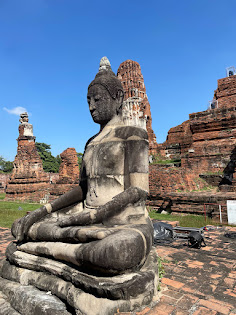


























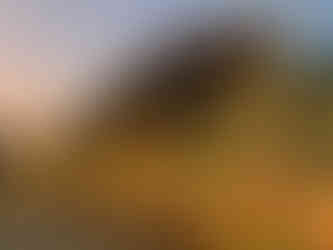











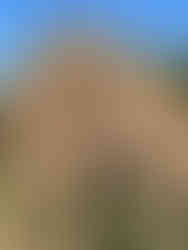

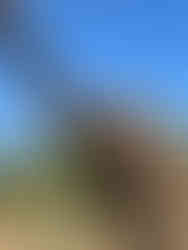








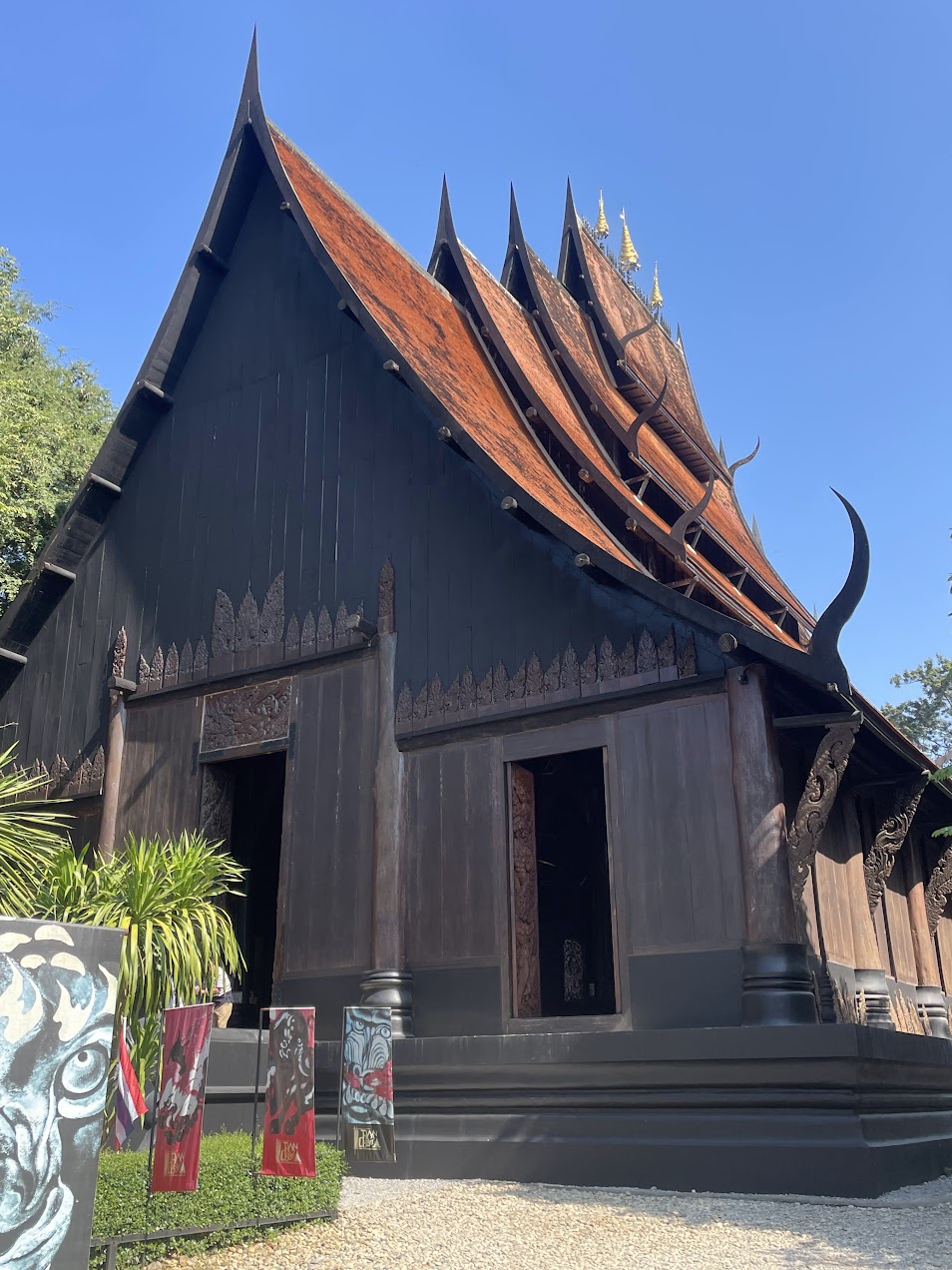




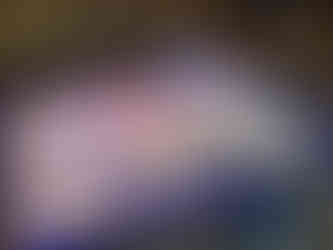








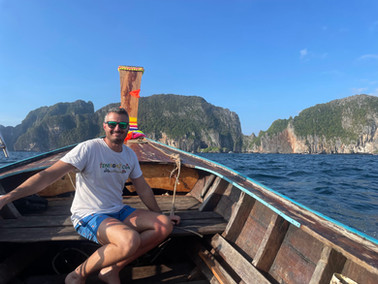














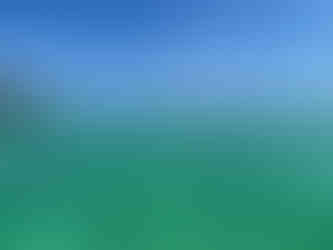


















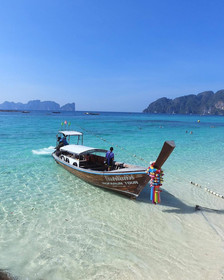












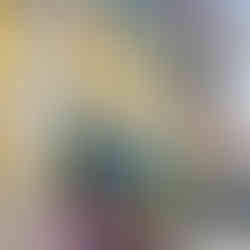









Comments